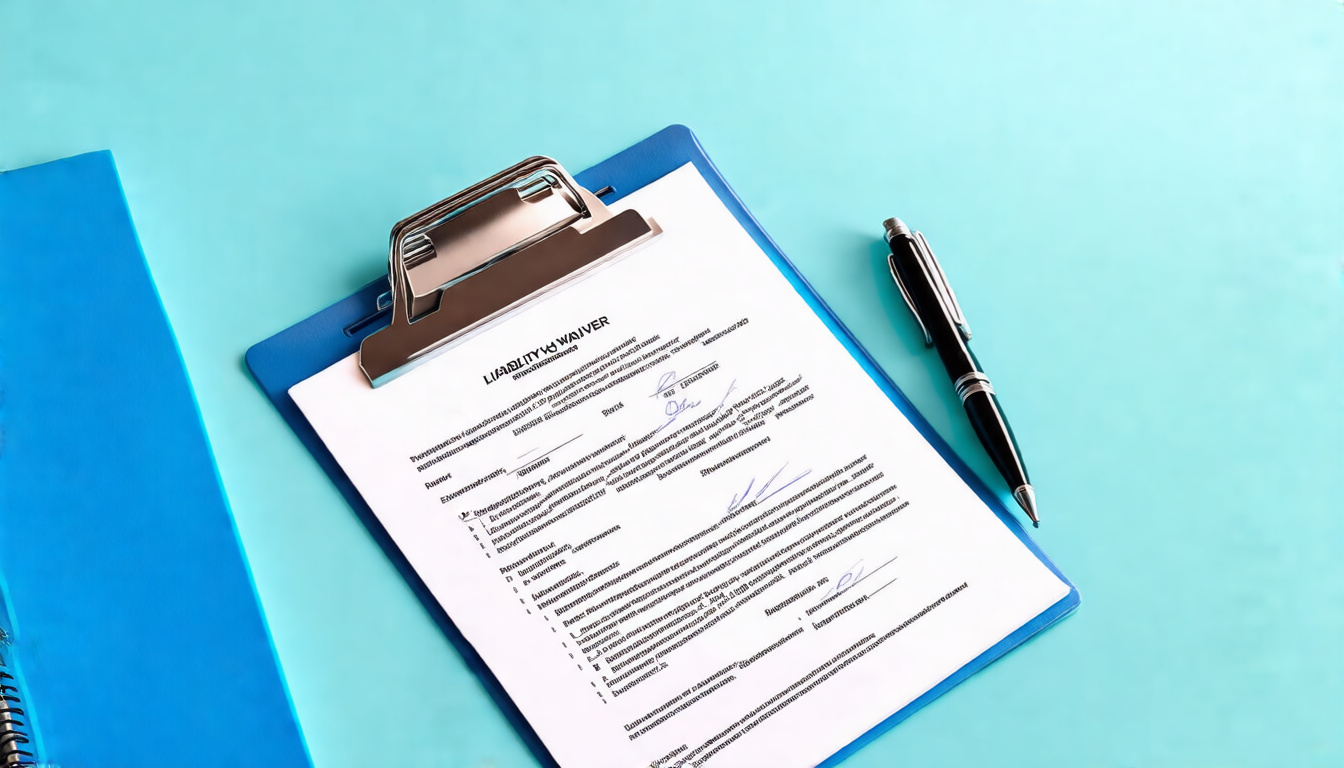When you run a business with risks, you need a liability waiver. It protects your business from lawsuits and tells customers about risks. Whether you own a gym, a recreation center, or plan events, the waiver is key. In this article, we explain what a waiver is, how to write one, and the best ways to use it.
What Is a Liability Waiver?
A liability waiver is a legal form. In it, one person gives up the right to sue the other for harm. This form helps manage risk. It states the dangers clearly and gets the customer’s agreement to bear those risks.
Take a rock climbing gym as an example. The gym requires a waiver. The customer signs it to show that climbing is risky. This step cuts down costly lawsuits and keeps the business safe.
Why Is a Liability Waiver Important for Your Business?
A waiver is not just paperwork. It is a strong tool with many benefits:
• Risk Mitigation: The waiver limits legal claims if an injury occurs.
• Clear Communication: The form states risks in plain words.
• Professional Credibility: It shows that your business cares for safety.
• Insurance Compliance: Some insurers need signed waivers before offering coverage.
• Customer Awareness: The waiver makes customers see the risks clearly.
Without a clear waiver, even small accidents may spark legal battles that drain your money and hurt your reputation.
Elements of an Effective Liability Waiver
A good waiver has key parts. Each part serves a clear legal role:
1. Clear Identification of Parties
List the business owner and the customer with legal names. This rule stops confusion.
2. Description of the Activity
Describe the activity or service in plain language. It makes sure the waiver covers all risks.
3. Acknowledgment of Risk
List the risks in simple words. The customer must read and understand these risks.
4. Voluntary Participation Clause
State that the customer joins the activity by choice. They do this even after knowing the risks.
5. Release Statement
Write a clause that says the customer gives up the right to sue for injuries. It protects the business.
6. Indemnification Clause
Sometimes, add that the customer will cover any claims the business may face. This step adds extra protection.
7. Signature and Date
Get the customer’s signature and the date. This step shows that they agree before taking part.
8. Capacity to Consent
Ensure the customer can legally decide. If they are a minor, a guardian must sign too.
How to Draft a Liability Waiver That Holds Up in Court
Do not use a simple, generic form. Your words must be exact. Here are some clear tips:
• Use Plain Language: Avoid tough legal words.
• Be Specific: Tailor the waiver to your service.
• Avoid Overreach: Do not ask to waive claims for gross negligence or harm done on purpose.
• Update Regularly: Change your waiver as laws or risks do.
• Consult a Lawyer: Work with a lawyer who knows your industry.
Each tip links closely to protect you and makes every word count.
Best Practices for Presenting a Liability Waiver to Customers
A waiver works best when handled well. Try these tips:
• Provide Advance Notice: Let customers read the waiver before the event.
• Make It Accessible: Offer both digital and paper copies.
• Explain the Waiver: Talk through the main points so customers understand.
• Retain Signed Copies: Keep secure records for future checks.
• Respect Privacy: Protect any personal data you collect.
Using digital signature systems can help keep the process simple and safe.
Liability Waiver FAQs
1. Can a liability waiver protect against all types of lawsuits?
No. A waiver typically covers ordinary claims. It does not cover claims for gross negligence, willful misconduct, or intentional harm. Courts may not enforce these parts.
2. When should customers sign a liability waiver?
Have customers sign the waiver before they join any risky activity. Signing in advance or on the day of the event is best.
3. Are liability waivers legally enforceable everywhere?
Rules change with location. Laws differ by state or country. Ask a local lawyer to make sure your waiver follows the rules.
A Real-World Example: Protecting Your Business Legally
A tour company that offers hiking uses a waiver. Before the hike, each customer reads and signs a form. The waiver lists risks like rocky paths and bad weather. When customers sign, they agree to these dangers. This method reduces the chance of the company facing financial harm for small injuries.

According to the American Bar Association, a well-made waiver cuts down the risk of lawsuits and protects the business. However, it must be written carefully to avoid legal issues.
Conclusion: Take Charge of Your Business’s Risk Management Today
A good liability waiver is vital for any business that faces risk. It is your first shield against lawsuits. It also builds trust and shows clear communication with customers.
Start today by reviewing or drafting your waiver. Ask legal experts for advice. Make sure your customers read and sign before they participate. This careful work can stop costly lawsuits and grow customer trust.
Protect your business and your customers effectively—start drafting your liability waiver now!
Author: Doyle Weaver, Attorney at Law
Home | Estate Planning | Personal Injury | Hill Country Lawyer | Terms of Service | Privacy Policy
© 2025 Digital Law Firm, P.C.
Disclaimer: The content provided in this blog is for educational and informational purposes only. It is not intended to constitute legal advice or establish an attorney-client relationship. The information presented does not address individual circumstances and should not be relied upon as a substitute for professional legal counsel. Always consult a qualified attorney for advice regarding your specific legal situation. The author and publisher are not liable for any actions taken based on the content of this blog.

Leave a Reply